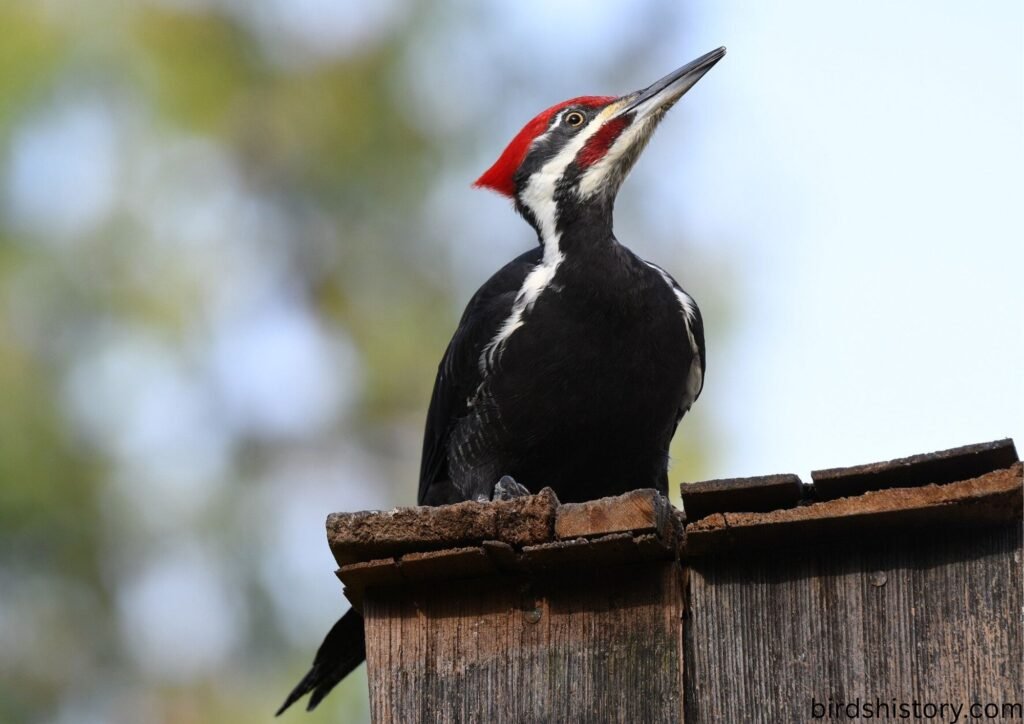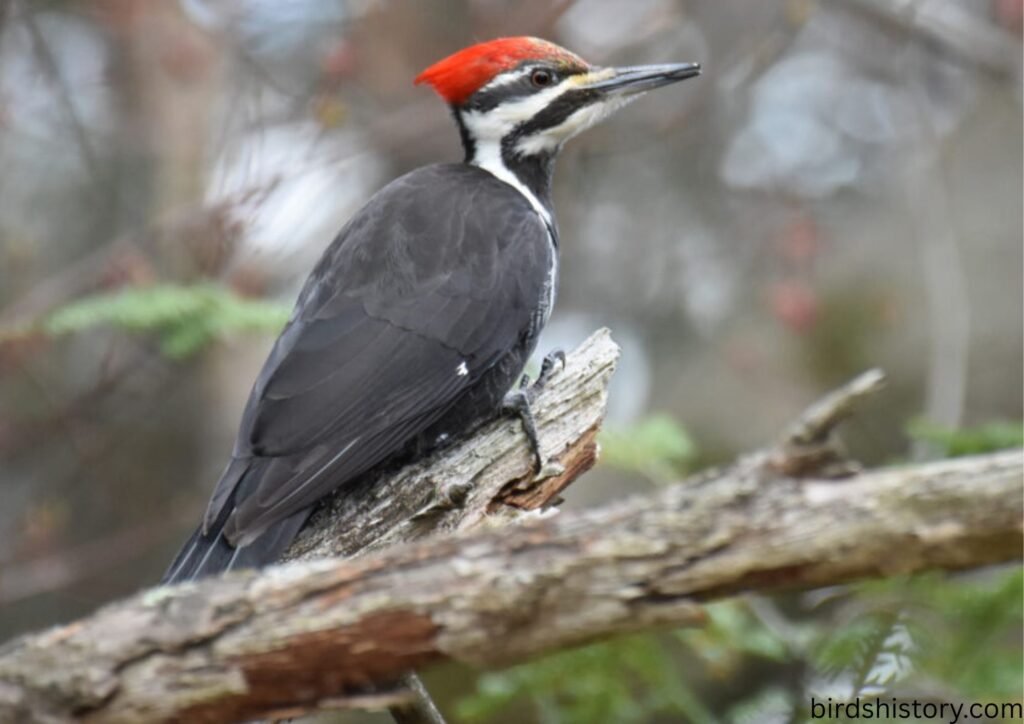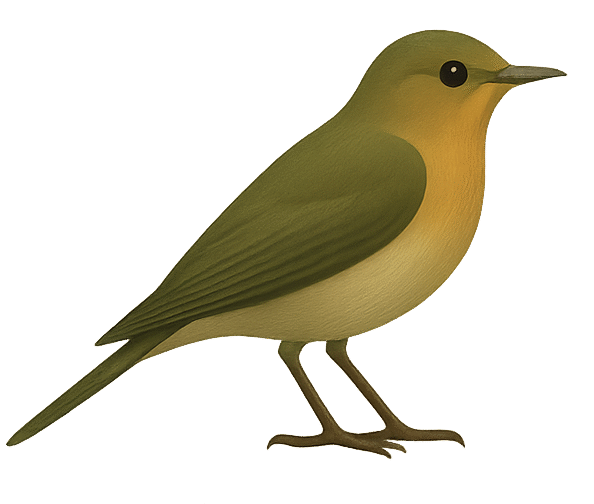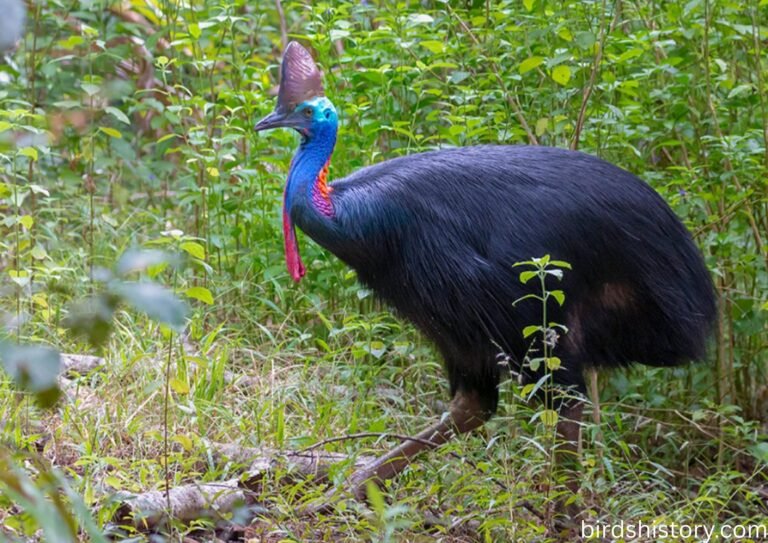Ivory-billed Woodpecker: The Legendary Ghost Bird of America
Few birds spark as much fascination, mystery, and debate as the Ivory-billed Woodpecker. Once widespread in the old-growth forests of the southeastern United States, this striking bird has long been a symbol of wilderness and resilience. Known as the “Lord God Bird” because of the awe it inspired in those who saw it, the Ivory-billed Woodpecker is one of the most iconic species in North American ornithology.
What makes this bird so interesting is not just its size and beauty, but also the fact that it may—or may not—still exist. Declared critically endangered and possibly extinct, reports of sightings continue to surface, keeping hope alive for birdwatchers and conservationists alike. Whether it survives today or lingers only in legend, the Ivory-billed Woodpecker has an unmatched place in natural history.
Taxonomy / Classification
The Ivory-billed Woodpecker holds a distinct place in the woodpecker family:
- Common Name: Ivory-billed Woodpecker
- Scientific Name: Campephilus principalis
- Family: Picidae (Woodpeckers)
- Order: Piciformes
- Class: Aves
It belongs to the same family as other well-known woodpeckers but stands out as one of the largest species ever documented in North America.
Also read: /the-resplendent-quetzal/
Physical Description
The Ivory-billed Woodpecker had a truly magnificent and striking appearance.
- Size: Adults measured between 18–20 inches (45–51 cm) in length, with a wingspan of 30 inches (76 cm).
- Plumage: Glossy black with bold white stripes running down the sides of the neck.
- Beak: Large, pale ivory-colored bill—straight and chisel-shaped—perfect for digging into wood.
- Wings and Tail: White patches were visible on the trailing edge of the wings in flight, creating a striking contrast.
- Sexual Differences:
- Males had a bright red crest.
- Females had a sleek black crest.
- Unique Traits: Their size alone made them stand out. In the forests of America, there were very few birds that could compete with their striking appearance and impressive stature.
Habitat and Range
The Ivory-billed Woodpecker was once widespread in the American South.
- Geographic Range: Southeastern United States and parts of Cuba.
- Preferred Habitat:
- Dense, old-growth hardwood forests.
- Swamplands with abundant dead or dying trees.
- Historical Distribution: Found across states like Arkansas, Louisiana, Mississippi, Florida, and South Carolina.
- Migration: Non-migratory; it remained year-round in its chosen territory.
These birds depended heavily on forests rich in dead wood, which provided food and nesting opportunities. Sadly, the destruction of their habitat occurred when these forests were logged extensively throughout the 19th and 20th centuries.

Diet and Feeding Habits
Ivory-billed Woodpeckers had a specialized diet.
- Primary Food Source: Beetle larvae, particularly those found in recently dead trees.
- Secondary Diet: Nuts, fruits, and smaller insects.
- Foraging Style:
- They hammered into bark and wood with powerful strokes of their bill.
- Known for stripping large patches of bark from trees in search of grubs.
- Interesting Behavior: Unlike smaller woodpeckers, they often sought out freshly dead or dying trees, rather than older, decaying ones.
This reliance on beetle larvae tied their survival to large tracts of undisturbed forests—a key reason they became so vulnerable when logging reduced their habitat.
Behavior and Lifestyle
The impressive size and presence of the Ivory-billed Woodpecker were reflected in its lifestyle.
- Social Habits: Typically lived in pairs or small family groups.
- Territoriality: They required vast territories, sometimes several square miles, to support their feeding habits.
- Flight: Strong, direct, and swift. Their large wingspan gave them a distinctive presence in flight.
- Vocalizations:
- Famous for a unique “kent” call, often likened to a child’s toy trumpet.
- They were also known for producing loud, double-tapping sounds with their beaks against tree trunks, which may have served as a form of communication.
- During courtship, the males would perform a display that involved drumming loudly and showing off their crests.
Reproduction and Lifespan
Though rarely observed in detail, ornithologists documented some aspects of their breeding.
- Breeding Season: Typically early spring.
- Nesting: Excavated large cavities in dead or dying trees, usually high above the ground.
- Clutch Size: 2–4 eggs, white in color.
- Incubation: Both parents participated in incubation and chick rearing.
- Chick Development: Chicks fledged after several weeks, relying on parents for food during early independence.
- Lifespan: Estimated at 10–15 years in the wild, though survival rates depended heavily on stable habitats.
Predators and Threats
The decline of the Ivory-billed Woodpecker was due more to humans than natural predators.
- Natural Predators:
- Hawks and owls (preying on chicks).
- Snakes raiding nests.
- Human-driven Threats:
- Deforestation, particularly the extensive logging of bottomland forests, led to the destruction of both their food sources and nesting grounds.
- Hunting: Once prized as trophies and specimens, hunters severely reduced populations.
- Collection: Natural history museums and private collectors contributed to its decline by capturing or shooting birds.
Conservation Status
The Ivory-billed Woodpecker is currently categorized by the IUCN as Critically Endangered (Possibly Extinct), which indicates that it faces an extremely high risk of extinction and may no longer exist in the wild.
- Last Confirmed Sighting: Widely debated. Many scientists point to the 1940s as the last reliable record.
- Rediscovery Claims:
- In 2004, a video from Arkansas stirred hope, but experts remain divided over whether it showed an Ivory-billed or a Pileated Woodpecker.
- Occasional unverified reports still surface from remote swamps in Louisiana and Florida.
- U.S. Fish and Wildlife Service: Proposed declaring the species officially extinct in 2021, though some researchers argue against closing the case.
- Conservation Efforts:
- Protection of bottomland forests.
- Ongoing searches led by ornithologists and birdwatchers determined to prove its survival.
The Ivory-billed Woodpecker has become a symbol of conservation challenges, illustrating what happens when species lose their habitats.

Interesting Facts
- When the ivory-billed woodpecker was sighted, it was so spectacular that people reportedly exclaimed, “Lord God!The bird earned the nickname “Lord God Bird” because its appearance inspired a sense of awe in people who saw it.
- Once the largest woodpecker in North America, rivaled only by its Cuban counterpart.
- Featured in art, folklore, and literature as a symbol of wilderness.
- Its “kent” call and double-knock drumming are still subjects of scientific debate.
- The species inspired passionate searches, rivaling quests for mythical creatures like Bigfoot.
- Known for being extremely shy, often disappearing into dense swamp forests when disturbed.
- It is one of the most extensively studied species in the world that is potentially extinct.
- The Cuban subspecies of this bird, known as Campephilus principalis bairdii, is also believed to be extinct due to the loss of its natural habitat.
- Unlike many woodpeckers, it preferred freshly dead trees over rotting ones.
- It has evolved into a cultural symbol representing hope, endurance, and the critical importance of protecting the environment.
Conclusion
The Ivory-billed Woodpecker continues to be one of the most compelling and unsolved puzzles among North American birds. With its striking black-and-white plumage, ivory bill, and unforgettable size, it left an impression that echoes through time. Though its survival remains uncertain, the bird continues to inspire hope, curiosity, and action in conservation circles.
Whether alive in hidden corners of swamplands or living on in legend, the Ivory-billed Woodpecker is a reminder of how fragile ecosystems can be—and how urgently they need our protection. Learning about this bird is not just about nostalgia; it is about understanding the cost of neglecting biodiversity.
FAQs About the Ivory-billed Woodpecker
Why is it called the Ivory-billed Woodpecker?
The woodpecker’s name is derived from its light-colored, ivory-like bill, which was a striking contrast to its dark feathers.
What is the “Lord God Bird”?
It’s a nickname for the Ivory-billed Woodpecker, inspired by the amazement people felt when seeing it.
When was the last confirmed sighting?
Most experts agree the last confirmed U.S. The last confirmed sighting was in the 1940s, but people have continued to report seeing the bird since then.
Where did it live?
In southeastern U.S. swamps and old-growth forests, particularly in states like Arkansas, Louisiana, and Florida.
How big was it?
With a length of about 18–20 inches and a wingspan of up to 30 inches, this is one of the biggest woodpeckers found in North America.
What did it eat?
Primarily beetle larvae found in freshly dead trees, along with fruits and nuts.
Are there any alive today?
It is considered possibly extinct, but some researchers believe small populations may survive undetected.
How did it go extinct?
Deforestation, hunting, and specimen collection decimated its population.
How is it different from the Pileated Woodpecker?
The Ivory-billed Woodpecker is bigger and has a white bill and white edges on its wings, while the Pileated Woodpecker is distinguished by its red and black markings.
Why is it important in conservation?
It serves as a cautionary tale of habitat destruction and highlights the need for protecting old-growth forests.







